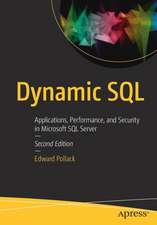Anomaly Detection Principles and Algorithms: Terrorism, Security, and Computation
Autor Kishan G. Mehrotra, Chilukuri K. Mohan, HuaMing Huangen Limba Engleză Hardback – 25 ian 2018
The authors also cover algorithms that address different kinds of problems of interest with single and multiple time series data and multi-dimensional data. New ensemble anomaly detection algorithms are described, utilizing the benefits provided by diverse algorithms, each of which work well on some kinds of data.
With advancements in technology and the extensive use of the internet as a medium for communications and commerce, there has been a tremendous increase in the threats faced by individuals and organizations from attackers and criminal entities. Variations in the observable behaviors of individuals (from others and from their own past behaviors) have been found to be useful in predicting potential problems of various kinds. Hence computer scientists and statisticians have been conducting research on automatically identifying anomalies in large datasets.
This book will primarily target practitioners and researchers who are newcomers to the area of modern anomaly detection techniques. Advanced-level students in computer science will also find this book helpful with their studies.
| Toate formatele și edițiile | Preț | Express |
|---|---|---|
| Paperback (1) | 646.80 lei 6-8 săpt. | |
| Springer International Publishing – 6 iun 2019 | 646.80 lei 6-8 săpt. | |
| Hardback (1) | 933.57 lei 6-8 săpt. | |
| Springer International Publishing – 25 ian 2018 | 933.57 lei 6-8 săpt. |
Preț: 933.57 lei
Preț vechi: 1166.96 lei
-20% Nou
178.63€ • 187.01$ • 147.81£
Carte tipărită la comandă
Livrare economică 05-19 aprilie
Specificații
ISBN-10: 3319675249
Pagini: 217
Ilustrații: XXII, 217 p. 66 illus., 55 illus. in color.
Dimensiuni: 155 x 235 x 24 mm
Greutate: 0.51 kg
Ediția:1st ed. 2017
Editura: Springer International Publishing
Colecția Springer
Seria Terrorism, Security, and Computation
Locul publicării:Cham, Switzerland
Cuprins
1 Introduction.- 2 Anomaly Detection.- 3 Distance-based Anomaly Detection Approaches.- 4 Clustering-based Anomaly Detection Approaches.- 5 Model-based Anomaly Detection Approaches.- 6 Distance and Density Based Approaches.- 7 Rank Based Approaches.- 8 Ensemble Methods.- 9 Algorithms for Time Series Data.- Datasets for Evaluation.- Datasets for Time Series Experiments.
Recenzii
Textul de pe ultima copertă
This book provides a readable and elegant presentation of the principles of anomaly detection,providing an easy introduction for newcomers to the field. A large number of algorithms are succinctly described, along with a presentation of their strengths and weaknesses.
The authors also cover algorithms that address different kinds of problems of interest with single and multiple time series data and multi-dimensional data. New ensemble anomaly detection algorithms are described, utilizing the benefits provided by diverse algorithms, each of which work well on some kinds of data.
With advancements in technology and the extensive use of the internet as a medium for communications and commerce, there has been a tremendous increase in the threats faced by individuals and organizations from attackers and criminal entities. Variations in the observable behaviors of individuals (from others and from their own past behaviors) have been found to be useful in predicting potential problems of various kinds. Hence computer scientists and statisticians have been conducting research on automatically identifying anomalies in large datasets.
This book will primarily target practitioners and researchers who are newcomers to the area of modern anomaly detection techniques. Advanced-level students in computer science will also find this book helpful with their studies.
Caracteristici
Introduces new ensemble methods for improved anomaly detection
Covers rank-based anomaly detection algorithms
Discusses the pros and cons of various approaches used for anomaly detection
Descriere
This book provides a readable and elegant presentation of the principles of anomaly detection,providing an easy introduction for newcomers to the field. A large number of algorithms are succinctly described, along with a presentation of their strengths and weaknesses.
The authors also cover algorithms that address different kinds of problems of interest with single and multiple time series data and multi-dimensional data. New ensemble anomaly detection algorithms are described, utilizing the benefits provided by diverse algorithms, each of which work well on some kinds of data.
With advancements in technology and the extensive use of the internet as a medium for communications and commerce, there has been a tremendous increase in the threats faced by individuals and organizations from attackers and criminal entities. Variations in the observable behaviors of individuals (from others and from their own past behaviors) have been found to be useful in predicting potential problems of various kinds. Hence computer scientists and statisticians have been conducting research on automatically identifying anomalies in large datasets.
This book will primarily target practitioners and researchers who are newcomers to the area of modern anomaly detection techniques. Advanced-level students in computer science will also find this book helpful with their studies.



























